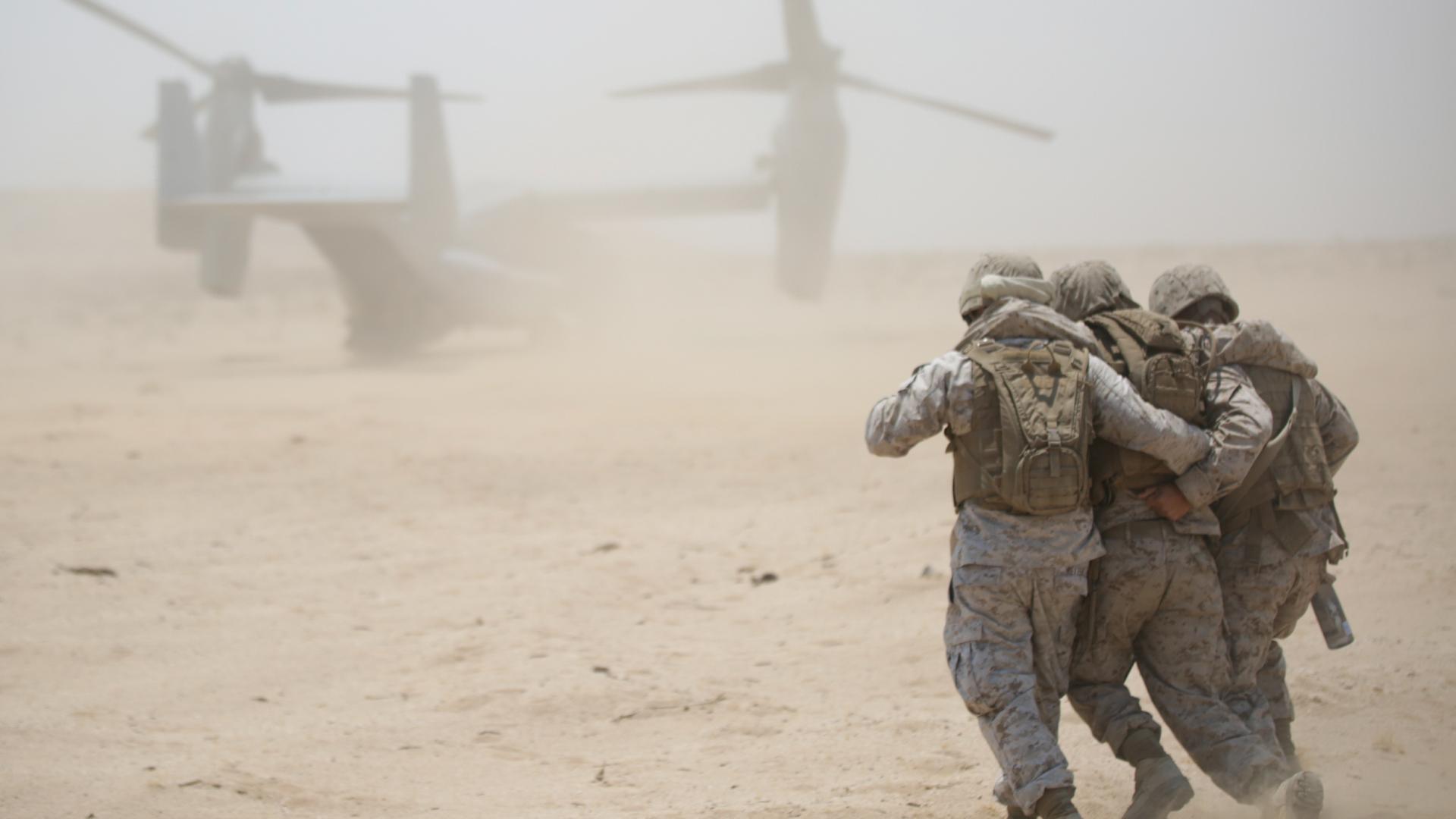MARINE CORPS AIR GROUND COMBAT CENTER TWENTYNINE PALMS: Halfway into a 109-degree day, without a cloud in the sky and nothing but sand as far as the eye could see, a small number of Marines and sailors were prepared to do their job and be the difference between life and death.
4th Medical Battalion, 4th Marine Logistic Group, Marine Forces Reserve is one of the many units participating in the 2015 Integrated Training Exercise 4-15 at Marine Corps Air Ground Combat Center, Twentynine Palms, California, June 20, 2015
In addition to their own period of training and exercise, 4th Med. Bn. is also providing a critical asset to ITX 4-15.
“Our primary mission is not only to train but also provide medical care for the Marine Air Ground Task Force,” said Petty Officer 1st Class Adam C. Strotz, 4th Med. Bn. lead petty officer.
Going above and beyond a sideline medical center, the unit is currently using their Shock Trauma Platoon Forward and Resuscitation Surgical System at the exercise ranges.
“We are much depended upon,” said Cpl. Maurice L. Webb a water purification specialist with Surgical Company A, 4th Med. Bn. “If anyone goes down for any reason, we can treat them for anything from heat casualties to dismemberment or gunshot wounds, and be the first ones on deck to get that person stabilized and out for a higher echelon of care.”
The STPFRS System was developed in 2001 and it was initially used during the invasion of Iraq during Operation Iraqi Freedom. Since then, the system has been updated and it is now more efficiently providing aid and support to casualties.
“In this unit we are capable of providing surgical care for up to 18 patients over a period of 72 hours without resupplying,” said U.S. Navy Capt. Carl Bergren, 4th Med. Bn. officer in charge. “This is a highly mobile system. It is designed to be able to be broken down and set up again within an hour at another location.”
The most common casualties the unit has seen at ITX are heat casualties. However, they are equipped and ready to handle much more.
“In a combat situation this unit would be capable of transporting blood, we would have limited laboratory capabilities, to be able to draw blood and run some laboratory exams, as well as surgical capability,” said Bergren. “We are in a position where we are able to provide our own convoy support so that we can quickly resupply ice and intravenous fluids, as well as provide our own ground transportation to be able to take Marines and Sailors back to the main side of the base or Camp Wilson.”
The unique weather and terrain present during ITX in Twentynine Palms allows Marines and sailors to train under realistic conditions, which gives them a taste of what they may deal with during a deployment.
“This training is getting us ready to deploy at any time,” said Webb. “We have also had cold weather training in Alaska. We are being trained for any terrain or climate that you can possibly think of.”
The battalion’s training and hard work paid off when a mass heat casualty struck the unit by surprise during another unit’s exercise. More than 20 patients with heat-related illness were treated by the medical team over the period of an hour.
“That was a real-world scenario,” said Strotz. “They all performed exceptionally well. They were all able to treat, assess and triage the patients accordingly.”
Another crucial factor in the unit’s success is the cohesion and team work between Marines and sailors.
“The Marines and sailors here work great together, everyone steps up when needed,” said Strotz. “The Marines are definitely playing a vital part in maintaining security, communication and non-medical assets. All the corpsmen are stepping up and ensuring that any type of support the Marines need is being taking care of.”
Challenges were expected, preparations were made and so far the outcome has been successful.
“My crew has been stellar in their performance. Everyone has stepped up, especially during the real world mass casualty,” said Bergren. “I can’t ask for a better group and I would be proud to go to war with them.”










